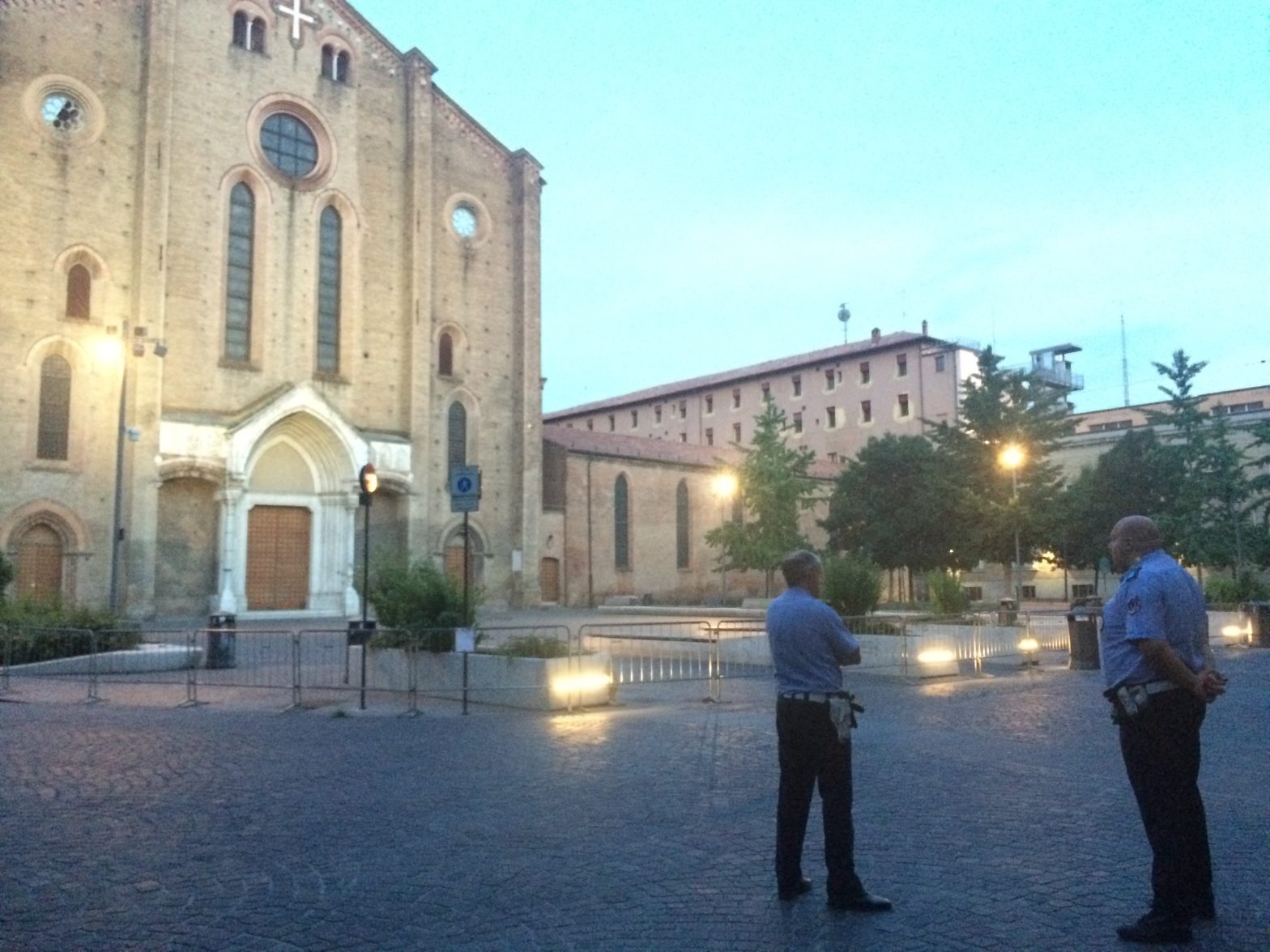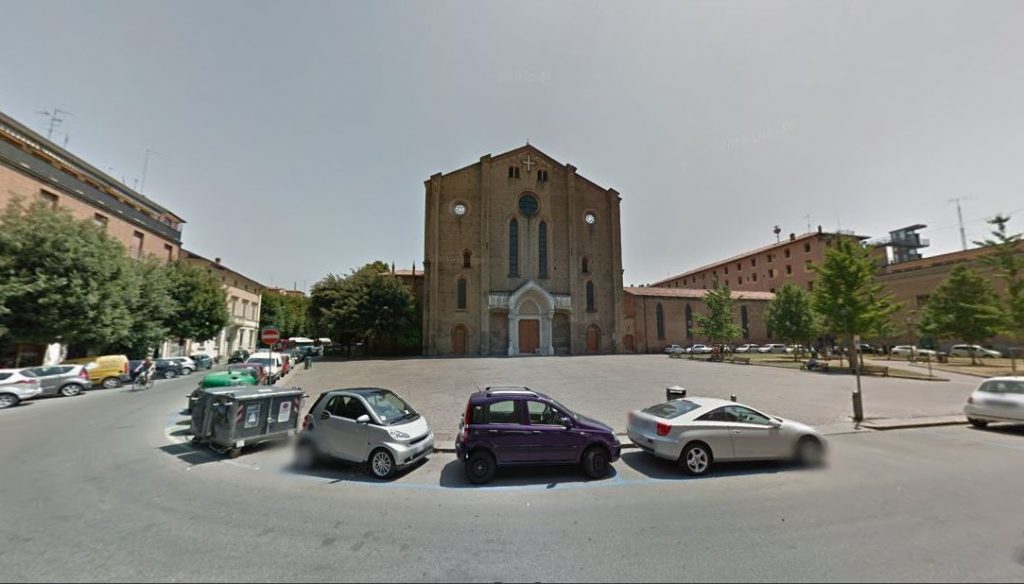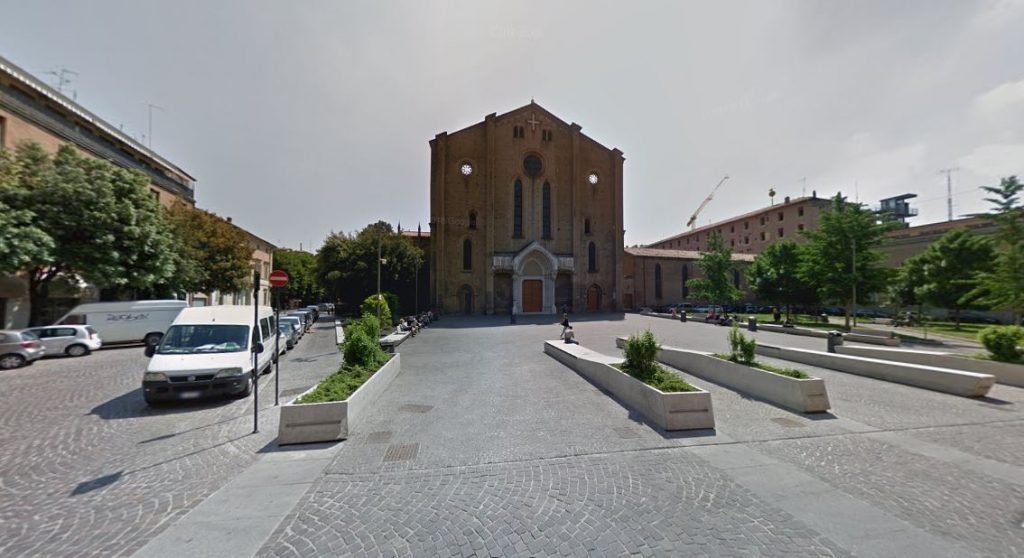The Pratello neighborhood is known for being a place where people can weave social relations in relatively free and spontaneous ways. A place of great diversity and inclusiveness in which ideally anyone can be themselves without being discriminated against, judged or feeling uncomfortable. In fact, according to the several available accounts of its recent history, the popular character of the street, as well as its libertarian and leftist culture made it an open place for people and behaviors that would have hardly found a welcoming environment elsewhere in Bologna. Naturally, this has always been accompanied by various forms of repression and control, at times more explicit and violent whereas other times more subtle and difficult to see and resist against. Arguably, the neighborhood is still today a fairly inclusive and lively area, especially in relation to other parts of the city. However…
The few seconds captured in the video predates the eviction of ordinary people who where hanging out in the public square Piazza San Francesco – located at the inner end of Via del Pratello. An image that is quite dissonant with the widespread perception of the area as open and free. But how did we get to this point?
Securitization
Notwithstanding – or precisely because of – the high presence of leftist political groups and the widespread libertarian culture, the Pratello neighborhood has always been traversed by social conflicts which triggered various forms of opposition to the status quo and, as a result, of repressive actions. While interventions aimed at repressing poor people, petty crimes (drug dealers in particular), and political militancy mobilize different narratives and tools in order to gain legitimacy and achieve their goals, they often overlap with each other and it is not rare, for instance, that anti-squatting measures turn out to hit poor people in general, or anti-drugs actions end up opening up spaces and enabling tools for the repression of political militancy. Therefore, in order to grasp the impacts of securitization it is important to capture how hostile architecture, CCTVs, police visible presence, temporary and permanent interdiction of space – just to mention a few – co-create a securitized and hostile environment which a diverse range of people are gradually excluded from or further marginalized within. However one must keep in mind that while the security infrastructure affects anyone who enters its field of forces, the impact on subjects and groups varies according to their specific vulnerability.
In this post I decided to focus on an immaterial piece of the security infrastructure that is nonetheless extremely powerful and produces tangible effects even at a material level. Temporary municipal laws are a relatively explicit form of regulation of the aesthetics, behaviors and accessibility of the Pratello neighborhood. Looking at this specific legislative tool sheds light on how ideas of security, decency and beauty are inextricably interconnected in the production of space in this area.
Ordinanza – Mayoral decree
Ordinanza, which can be literally translated as ordinance, is a decree that the Mayors of italian cities can promulgate without following the normal legislative process which includes obtaining the majority of votes in the municipal council. This legislative tool exists in Italy since 1965. However its use and limitations have changed according to the local and national governments political orientation. Ordinanza is supposed to be used for regulating temporarily situations of urgency and necessity which expose people in cities to great dangers. Due to its smooth procedure and executory effectiveness, and thanks to a recent national law that increased the powers in the hands of mayors in order to contrast urban decay and illegal immigration, the use of this temporary regulations increased drastically.
In Bologna, which has been historically governed by communists and social-democrats, ordinances have become one of the main tools to regulate the use of public spaces, squares and streets above all. The targets of such interventions are usually drug addicts, poor and homeless people, migrants, informal traders and students. These categories of people, who attend public spaces more frequently than others -even though for different reasons and in different ways- are often affected by forms of restriction and criminalization of their behaviors and habits. Examples are the prohibition of informal and illegal economic activity, the restriction of trade and consumption of alcohol outside bars, the imposition of closing hours to shops and bars, the removal of people sleeping under the streets’ porches or the ban on unauthorized production of noise (music, singing, screaming etc.).
Piazza San Francesco is located at one end of Via del Pratello and, just like its neighbor street, is a very lively place, especially at night. Starting from 6pm onward people start gathering to meet friends, eat and drink together. Street vendors, just like the bars and shops in the area, sell alcohol and other goods to the people who frequent the area. Different groups of people often join each other in Piazza San Francesco after dinner time to spend time together, drink, smoke weed, sing and sometimes dance together. In the last 10-15 years this has grown exponentially due to a serie of factors: the pursuit of a ‘greater social mix’ in public spaces spaces where the youth usually gathers by ‘breaking them up’ (dissuasion of gatherings through various techniques of repression of social life); the liberalization of licenses and the concession of public space for outside seats and tables of restaurants and bars; the restyling of the square with the installation of new seats and flowerbeds; the quasi-total pedestrianization of the Pratello neighborhood.
The transformation of the Pratello neighborhood into a night life district brought about a set of, on the one hand, complaints from some of its residents and, on the other hand, municipal regulations of the social gatherings that occur in the area. One would not be surprised that, by favoring a certain type of attendance to a city area and by improving its aesthetic conditions, a greater influx of people would occur. Interestingly, though, the municipal government got caught up into a spiral of repression of the practices and behaviors people display in redeveloped parts of the city. What seems contradicting about the Municipality’s governmental action is the favoring of a specific type of development in the neighborhood followed by a criminalization of those who economically support such development, namely its users.
However, just like in the case of ‘street art’, the distinction that is operated by the local government is between good and bad frequenters. Unsurprisingly, these two categories are constructed according to ideas of beauty, economic productiveness and decency that suits the city’s middle and upper classes. While this might seem a rough way of identifying the social groups who detain power in the city, the class line describes quite accurately the separation between those who own real estate property in the city and those who live outside the city center, who only temporarily lease a living space within it (students, migrants, street vendors), or who do not have access to any property whatsoever (homeless people). These social groups not only hold little economic power, but they also exert an extremely limited political power, especially at a local level, in that people who do not have a citizenship or whose main residence is outside the municipality do not vote in the municipal elections.
This unbalance of power has the effect of creating different classes of citizens, whose sensibility, aesthetics and spatial practices are hierarchically ordered. Via del Pratello and Piazza San Francesco are increasingly leaning towards this type of social configuration where what is beautiful for some people is seen as indecent by others; what is enjoyment and spontaneous attendance of the public space for the many becomes noise and insecurity for the few. The ideal of beauty and security that prevail in a specific publics space reveal a big deal of who holds the power to make a space their own place.


